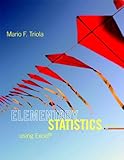Organic chemistry janice smith 4th edition pdf free download:92o8xwryhzkaso9pilfiqiky3fo
Dating > Organic chemistry janice smith 4th edition pdf free download:92o8xwryhzkaso9pilfiqiky3fo
Download links: → Organic chemistry janice smith 4th edition pdf free download:92o8xwryhzkaso9pilfiqiky3fo → Organic chemistry janice smith 4th edition pdf free download:92o8xwryhzkaso9pilfiqiky3fo
In response to reviewer suggestions, new sections have been added on fragmentation patterns in mass spectrometry Part 13. Free download Organic Chemistry 3rd edition written by Janice Gorzynski Smith in pdf. Over 350 new problems are included in the third edition. Itʼs also possible that your computer has been infected with a Spambot virus thatʼs using your computer to gather information.

The interior design has been modified to tidy margins, and art labeling has been simplified, so students can focus more clearly on the important concepts in a section. The majority of these problems are written at the intermediate level—more advanced than the easier drill problems, but not as complex as the challenge problems. In response to reviewer suggestions, new sections have been added on fragmentation patterns in mass spectrometry Part 13. Organic Chemistry is my attempt to simplify and clarify a course that intimidates many students—to make organic chemistry interesting, relevant, and accessible to all students, both chemistry majors and those interested in pursuing careers in biology, medicine, and other disciplines, without sacrificing the rigor they need to be successful in the future. Weʼve developed a service called that has been specially designed to handle such requests.
Beginning with Chapter 11, there are additional multi-step synthesis problems that rely on reactions learned in earlier chapters. Free download Organic Chemistry 3rd edition written by Janice Gorzynski Smith in pdf. Over 350 new problems are included in the third edition.

- New micro-to-macro illustrations are included on hydrogen bonding in DNA Chapter 3 , the production of ethanol from corn Chapter 9 , partial hydrogenation of vegetable oils Chapter 12 , artificial sweeteners Chapter 27 , and insulin Chapter 28. Twenty new NMR spectra have been added in Chapters 14—25 to give students additional practice in this important type of analysis.

Organic Chemistry 4th Edition by Janice Smith continues to breathe new life into the organic chemistry world. This edition retains its popular delivery of natural chemistry content material in a student-friendly format. In response to reviewer suggestions, new sections have been added on fragmentation patterns in mass spectrometry Part 13. In addition, sections on splitting in NMR spectroscopy Section 14. Some mechanisms have been modified by adding electron pairs to nucleophiles and leaving groups to more clearly point out the course of the chemical reaction. Twenty new NMR spectra have been added in Chapters 14—25 to give students additional practice in this important type of analysis. Over 350 new problems are included in the third edition. The majority of these problems are written at the intermediate level—more advanced than the easier drill problems, but not as complex as the challenge problems. Beginning with Chapter 11, there are additional multi-step synthesis problems that rely on reactions learned in earlier chapters. The interior design has been modified to tidy margins, and art labeling has been simplified, so students can focus more clearly on the important concepts in a section. New micro-to-macro illustrations are included on hydrogen bonding in DNA Chapter 3 , the production of ethanol from corn Chapter 9 , partial hydrogenation of vegetable oils Chapter 12 , artificial sweeteners Chapter 27 , and insulin Chapter 28. Several 3-D illustrations of proteins have been added to Chapter 28 as well. The depiction of enzymes as biological catalysts in Chapter 6 has been redone to use an actual reaction—the conversion of the lactose in milk to glucose and galactose. New health-related and environmental applications are included in margin notes and problems. Topics include the health benefits of omega-3 fatty acids, α-hydroxy acids in skin care products, drugs such as Benadryl that contain ammonium salts, chloroethane as a local anesthetic, rebaudioside A trade name Truvia , a sweetening agent isolated from a plant source, and many others.
Last updated